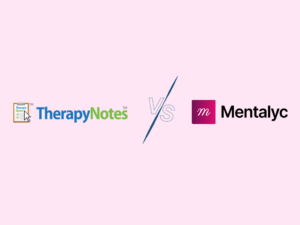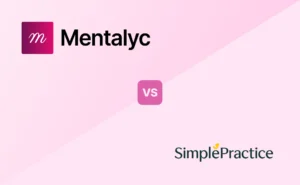The Major Depressive Disorder (MDD) is classified under Mood Disorders and is assigned code F32.9. This applies specifically to the American edition of ICD-10-CM (effective October 1, 2023). International versions of ICD-10 may use different codes.
Depression, also known as Major Depressive Disorder (MDD), is a mental health condition that affects the functioning of millions of individuals worldwide. An estimated 3.8% of the population experience major depression: 5% of adults (4% among men and 6% among women). About 280 M people have MDD in the world (Institute of Health Metrics and Evaluation, 2023).
The International Classification of Diseases, Revision (ICD-10) is a widely recognized classification system used to code various health conditions, including mental disorders. This article explores the ICD 10 classification of Major Depressive Disorder, offering insights into its criteria, subtypes, prevalence, impact, and treatment options.
ICD 10 Classification of Major Depressive Disorder
The ICD-10 system, developed by the World Health Organization (WHO), provides a framework for categorizing diseases, health conditions, and mental health disorders. Within this system, Major Depressive Disorder (MDD) is classified under Mood Disorders and is assigned code F32.

New! Transfer your notes to EHR with a single click. No more copy-pasting.
Diagnostic Criteria
To receive a diagnosis of MDD according to the ICD-10 criteria, specific diagnostic criteria must be met for a defined period of time.
During a depressive episode, the client experiences a depressed mood (feeling sad, irritable, or empty). They may experience a loss of pleasure or interest in activities. Different from typical mood fluctuations, a depressive episode lasts most of the day, nearly every day, for at least two weeks. Other symptoms must also be present.
MDD symptoms include the following:
- poor concentration
- difficulty making decisions
- feelings of excessive guilt
- significant self-doubt
- low self-worth
- hopelessness about the future
- psychomotor changes (e.g., restlessness or speaking slowly)
- thoughts about dying, death, or suicide
- disrupted sleep (trouble falling asleep or staying asleep or feeling excessively sleepy during the day)
- changes in appetite or weight
- feeling very tired or low in energy
MDD can cause difficulties in all aspects of life, including within the community, or at home, work, or school.
Severity Classifications
Depressive episodes are categorized as mild, moderate, or severe depending on the number and severity of symptoms, as well as the impact on the client’s functioning. Classifications are often used by mental health professionals to assess and communicate the intensity of a client’s depressive episode.
Mild Depression
Mild Depression, also known as mild depressive disorder or dysthymia, involves experiencing symptoms that are relatively less severe compared to moderate or severe depression. Clients with mild depression can function reasonably well in their daily lives, but they might feel consistently down, lack interest in pleasurable activities, experience low energy most days, have appetite changes, and experience sleep problems. While these symptoms are bothersome, they may not significantly impair the client’s ability to perform usual tasks and responsibilities.
Moderate Depression
Moderate Depression involves more intense symptoms than mild depression. Clients experience a greater impact on their daily functioning and overall well-being. Symptoms include persistent feelings of sadness, significant appetite changes, frequent sleep patterns, difficulty concentrating, low self-esteem, feelings of hopelessness, and reduced interest in activities. It will be challenging for clients to maintain regular routines, and they may require more support to manage symptoms.
Severe Depression
Severe Depression, also referred to as major depressive disorder (MDD), represents the most intense and debilitating form of depression. Symptoms are highly disruptive, making it extremely difficult for the client to complete daily tasks, maintain relationships, and engage in regular activities. Symptoms include pervasive feelings of sadness, worthlessness, hopelessness, emptiness, and despair. There may be significant sleep and appetite changes, extreme fatigue, lack of focus, and a lack of interest in previously enjoyed activities. There may be suicidal ideation or attempts. Professional intervention and treatment are recommended, which might involve therapy, medication, or a combination.
Clients can experience a wide range of symptoms that may not fit neatly into these categories. The classification system is not fixed because a client’s symptoms can change over time, and they may move between categories.
Subtypes and Specifiers
Within the ICD-10 classification, MDD is further classified into subtypes with specifiers based on features and characteristics, including:
- Single Episode – Refers to experiencing one episode without previous occurrences.
- Recurrent Episode – Involves experiencing episodes of depression with periods of at least two months between each episode where significant symptoms are absent.
- With Psychotic Features – Occurs when a client experiences delusions, paranoia, or hallucinations along with other MDD symptoms.
- Bipolar Disorder – Refers to depressive episodes that alternate with periods of mania.
- With Characteristics – Refers to symptoms that deviate from the pattern of depression.
- With Catatonic Features – Characterized by motor behavior ranging from restlessness to complete immobility.
- With Melancholic Features – Refers to symptoms that include waking up early in the morning, overwhelming feelings of guilt, and a lack of responsiveness to positive events.
- With Postpartum Onset – Used when depressive episodes occur within four weeks after giving birth.
- With Seasonal Pattern – Also known as Seasonal Affective Disorder (SAD), this specifier indicates the onset of depressive episodes during specific seasons, typically winter.
Impact
According to the World Health Organization (WHO), depression is one of the leading causes of disability. MDD affects people of all age groups, and the disorder often leads to impairment in social interactions, work or school performance, relationships, and quality of life.
Contributing Factors and Prevention
MDD results from a complex interaction of social, psychological, and biological factors (Remes, et al., 2021). Clients who have experienced adverse life events such as trauma, unemployment, bereavement, or loss are more likely to develop MDD. Depression can lead to additional stress and dysfunction and worsen the client’s well-being.
MDD is closely related to and affected by physical health. Many of the factors that influence depression, such as loneliness, physical inactivity, or substance abuse, are also known risk factors for cardiovascular disease, cancer, diabetes, and respiratory problems. Clients with these conditions may also find themselves experiencing depression symptoms due to the difficulties associated with managing their condition.
Prevention programs have been shown to reduce depression (Stice, et al., 2009). Effective approaches to prevent depression include community- and school-based programs to enhance patterns of positive coping and build resilience. Interventions for parents of children with behavioral problems may reduce parental depressive symptoms and improve outcomes for their children. Exercise programs for older clients can also be effective in depression prevention.
Treatment Approaches
Effective treatments for MDD include psychotherapy, lifestyle adjustments, and medications. Psychological treatments such as Cognitive-Behavioral Therapy (CBT) are the first-line treatment for depression. Combined with antidepressant medications such as selective serotonin reuptake inhibitors (SSRIs) or serotonin-norepinephrine reuptake inhibitors (SNRIs), in moderate and severe depression, treatment can be highly successful for many clients.
Additional psychological treatments for depression include:
- behavioral activation
- interpersonal psychotherapy
- problem-solving therapy
Note: Antidepressants should not be used for treating depression in children and are not the first line of treatment in adolescents, among whom they should be used with extra caution.
The Importance of Client Self-Care
Self-care plays an important role in managing symptoms of MDD and promoting overall well-being. Suggest clients do the following:
- Continue engaging in enjoyable activities
- Practice stress reduction activities
- Stay connected to friends and family
- Exercise regularly, even if it’s just a short walk
- Stick to regular eating and sleeping habits as much as possible
- Practice mindfulness or meditation
- Avoid or reduce alcohol use, and avoid illicit drugs or overuse of prescription medications, which can worsen symptoms
If your client is in immediate danger of harming themselves, contact the Suicide Help Line or emergency services.
Conclusion
The ICD 10 classification system for MDD provides a framework for understanding and diagnosing a mental health condition that impacts millions of people. With criteria, subtypes, and specifiers mental health professionals can accurately identify and treat clients that are impacted by this debilitating condition. As debilitating as MDD is, it is clear there is a need for appropriate interventions, comprehensive therapeutic methods, and stigma reduction to foster successful recovery and improve the overall well-being of the clients who suffer from it.
References:
- World Health Organization (WHO). (1993). The ICD-10 classification of mental and behavioral disorders. World Health Organization.
- Institute of Health Metrics and Evaluation. (2023). Global Health Data Exchange (GHDx), https://vizhub.healthdata.org/gbd-results/ (Accessed 25 August 2023).
- Remes O, Mendes JF, & Templeton P. (2021). Biological, psychological, and social determinants of depression: A review of recent literature. Brain Science, 10;11(12):1633.
- Stice E, Shaw H, Bohon C, Marti CN, & Rohde P. (2009). A meta-analytic review of depression prevention programs for children and adolescents: Factors that predict the magnitude of intervention effects. Journal of Consulting Clinical Psychology, 77(3):486-503.
Why other mental health professionals love Mentalyc

“It’s so quick and easy to do notes now … I used to stay late two hours to finish my notes. Now it’s a breeze.”
Licensed Professional Counselor

“By the end of the day, usually by the end of the session, I have my documentation done. I have a thorough, comprehensive note … It’s just saving me hours every week.”
CDCII

“Having Mentalyc take away some of the work from me has allowed me to be more present when I’m in session with clients … it took a lot of pressure off.”
LPC

“A lot of my clients love the functionality where I can send them a summary of what we addressed during the session, and they find it very helpful and enlightening.”
Therapist






